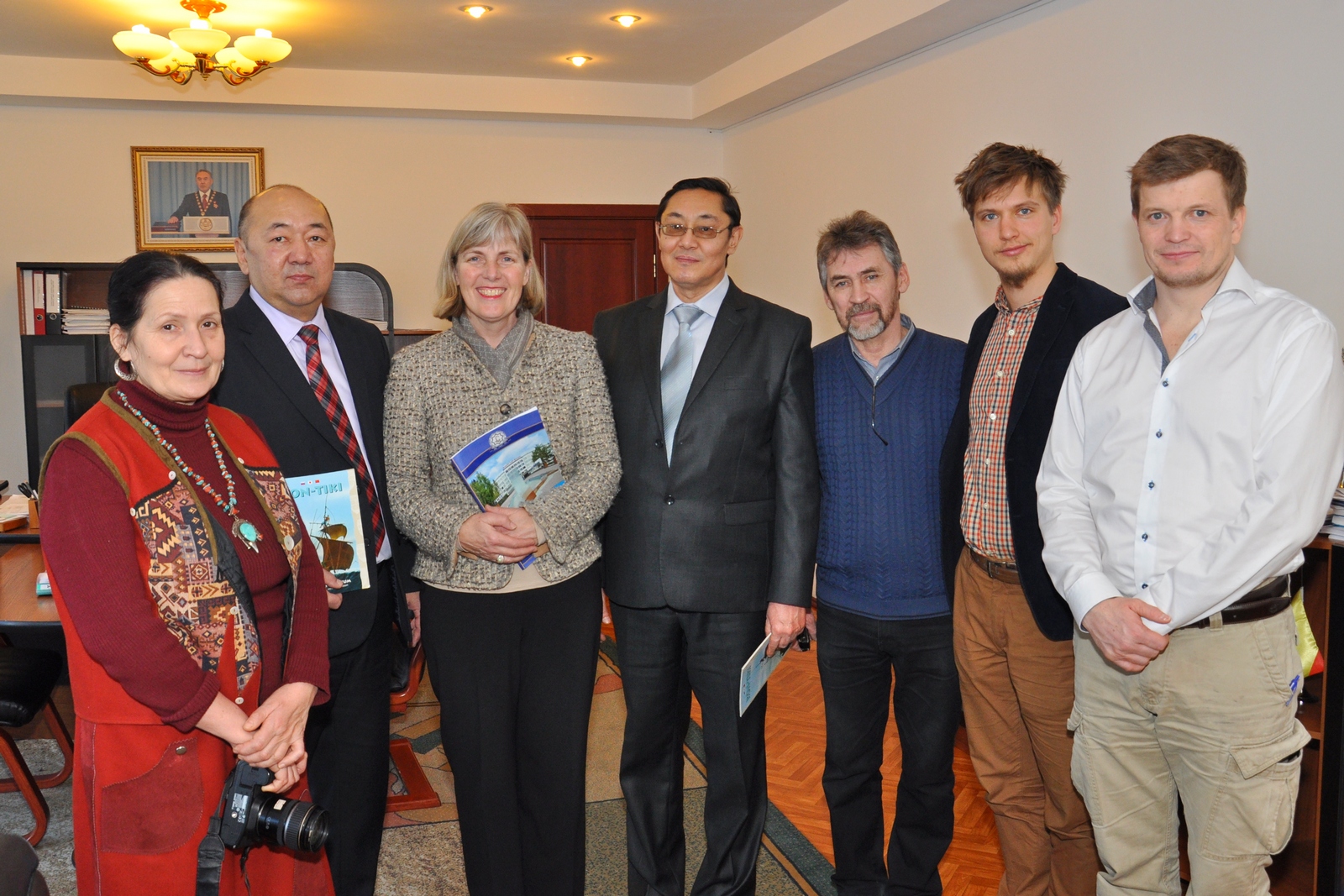International team of researchers headed by Sturla Ellingvog, a historian from Norway, and Peter Damgord, a Danish researcher of DNA, visited S. Toraighyrov Pavlodar State University.
Ellingvog's team works in close collaboration with researchers from Karaganda State University, S. Toraighyrov Pavlodar State University and also with Bettina Heyerdahl, the daughter of the famous Norwegian explorer and archaeologist Thor Heyerdahl.
A multidisciplinary team led by Ellingvog, which includes archaeologists, linguists, historians and geneticists, is looking for additional genetic evidence to support the theory of the common ancestral homeland of the Indo-Europeans. At present, the researchers are collecting DNA samples of the ancient population of the region in Pavlodar to support the theory of kinship of Europeans. According to the so-called Kurgan hypothesis, which was first formulated by the Lithuanian-American researcher Maria Gimbutas in 1956, the Indo-European ancestral homeland was located in the Pontic steppes. This area extends from eastern Ukraine and southern Russia to the north-west of Kazakhstan, from where early Indo-Europeans migrated not only into Europe, but also far into Asia. Therefore, the study of the DNA of our region's ancient population is of particular importance.
“The Kurgan hypothesis is to some extent confirmed by genetic evidence. Over the past 15 years, the Y-DNA R1a haplogroup has been characterized as a genetic signal of Proto-Indo-Europeans. The theory now seems more plausible than ever thanks to the recent discoveries relating to its structure and phylogeography. Moreover, the Y-DNA R1a haplogroup has been found in many ancient remains supposedly belonging to early Indo-Europeans,” says Sturla Ellingvog.
According to Peter Damgord, over the last 2-3 years, DNA technology has become much more advanced in the field of historical research about human migration. DNA Laboratory in Copenhagen, the Geogenetics Center, is one of the most advanced DNA laboratories in the world. Owing to this project, scientists can now get much closer to the understanding of where the Indo-European ancestral homeland was.
During their visits to S. Toraighyrov PSU, the guests were shown some materials covering a wide chronological range, from the Neolithic Period to the early Iron Age. They also visited the Joint Archaeological Research Center named after A.Kh. Margulan. Head of the Center V.K. Merts demonstrated some results of the field archaeological research and shared his thoughts on the origin of the Indo-Europeans and the significance of the materials collected by his research center for solving this problem. As a result of the joint work, 60 samples were selected for analysis, the results of which will clear up many cultural and historical problems and identify areas for further research.
Photo by Rufina Torpischeva







